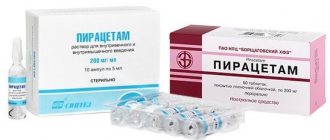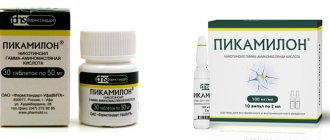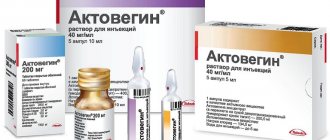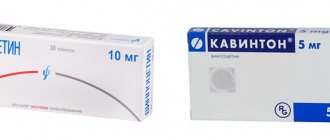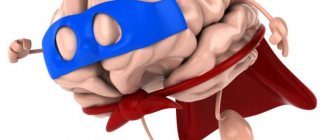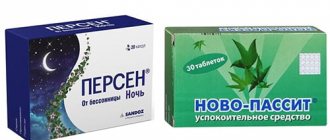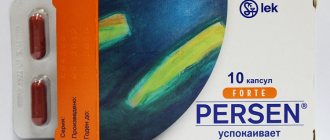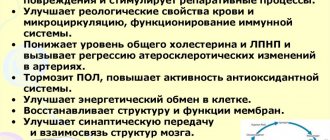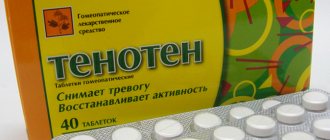Comparison of the effectiveness of Cortexin and Piracetam
The effectiveness of Cortexin is quite similar to Piracetam - this means that the ability of the drug substance to provide the maximum possible effect is similar.
For example, if the therapeutic effect of Cortexin is more pronounced, then using Piracetam even in large doses will not achieve this effect.
Also, the speed of therapy - an indicator of the speed of therapeutic action - is approximately the same for Cortexin and Piracetam. And bioavailability, that is, the amount of a drug reaching its site of action in the body, is similar. The higher the bioavailability, the less it will be lost during absorption and use by the body.
Comparison of the safety of Cortexin and Piracetam
The safety of a drug includes many factors.
At the same time, with Cortexin it is quite similar to Piracetam. It is important where the drug is metabolized: drugs are excreted from the body either unchanged or in the form of products of their biochemical transformations. Metabolism occurs spontaneously, but most often involves major organs such as the liver, kidneys, lungs, skin, brain and others. When assessing the metabolism of Cortexin, as well as of Piracetam, we look at which organ is the metabolizing organ and how critical the effect on it is.
The risk-benefit ratio is when the prescription of a drug is undesirable, but justified under certain conditions and circumstances, with the obligatory observance of caution in use. At the same time, Cortexin does not have any risks when used, just like Piracetam.
Also, when calculating safety, it is taken into account whether only allergic reactions occur or possible dysfunction of the main organs. In other matters, as well as the reversibility of the consequences of using Cortexin and Piracetam.
Cortexin or Piracetam
Cortexin is a relatively new representative of nootropics. During its production, many shortcomings of drugs of previous generations were taken into account.
The structural basis of Piracetam is a cyclic derivative of gamma-aminobutyric acid. The mechanism of action of this drug is not fully understood. It is assumed that it improves the energy potential of the body and increases the fluidity of biological membranes.
Cortexin is a polypeptide obtained by lyophilization from the cerebral cortex of cattle. When introduced into the human body, this substance penetrates nerve cells and causes the release of its own neuropeptides. At the same time, the ratio between activating and inhibitory transmitters is normalized, the risk of occurrence of foci of excessive excitation is reduced, and the transmission of impulses between neurons is improved.
Piracetam is the very first drug from the group of nootropics. It is used for many diseases:
- Diseases of the nervous system.
- Intoxication with alcohol, narcotic and psychoactive substances.
- Mental disorders.
This medicine has been around since 1964. During the period of its existence, a lot of knowledge has been accumulated about the features of the use and effects of this substance.
Piracetam improves blood supply and metabolic processes in tissues, especially nerves. In addition, it increases the energy supply of cells and their resistance to hypoxia.
The main problem with piracetam is the relatively high frequency and number of side effects:
- Nervousness.
- Depression.
- Sense of anxiety.
- Hallucinations.
- Irritability.
- Confusion.
- Bleeding.
- Vertigo.
- Nausea, vomiting, diarrhea.
- Increase in body weight.
- Allergic reactions (from minor itching to Quincke's edema).
With an overdose of Piracetam, the risk of unwanted effects increases.
Piracetam must be used carefully in complex therapy, as it can interact with a number of other drugs:
- Strengthens the effect of neuroleptics and psychostimulants.
- Weakens the effect of acenocoumarol.
- When used with thyroid hormones (thyroxine and triiodothyronine); Possible sleep disturbances, confusion and increased irritability.
Cortexin is much safer to use. When taking it, unwanted effects occur less often, which manifest themselves in the form of allergic reactions. In addition, when Cortexin is used simultaneously with other medications, there is no interaction between them. If the dose of the drug is exceeded, pathological processes do not develop.
Cortexin is available in the form of a whitish dry powder, which must be diluted with local anesthetic, water for injection or saline before use. The medicine is administered intramuscularly once a day in the morning. The course of treatment is 10 days and, if necessary, can be repeated after 3-6 months.
Piracetam is produced in different forms: granules for the preparation of syrup, syrup, capsules, solution for intramuscular and intravenous administration, and tablets. The form of the drug is selected depending on the patient’s condition and the severity of his pathology.
Thus, despite the common pharmacological group, the drugs differ quite significantly. Piracetam will be more effective in the treatment of dementia, mental disorders, coma and disorders of voluntary movements. Cortexin is better in treating children and patients who simultaneously have several pathologies. It is necessary to think about the choice of medication individually, assessing both the general condition of the patient and the presence of concomitant diseases, as well as the nature and form of the existing pathology. Only a qualified doctor can prescribe treatment. If something bothers you, do not self-medicate and seek medical help as soon as possible.
Comparison of addiction between Cortexin and Piracetam
Like safety, addiction also involves many factors that must be considered when evaluating a drug.
So, the totality of the values of such parameters as “o syndrome” for Cortexin is quite similar to the similar values for Piracetam. Withdrawal syndrome is a pathological condition that occurs after the cessation of intake of addictive or dependent substances into the body. And resistance is understood as initial immunity to a drug; in this it differs from addiction, when immunity to a drug develops over a certain period of time. The presence of resistance can only be stated if an attempt has been made to increase the dose of the drug to the maximum possible. At the same time, Cortexin has a fairly low “syndrome” value, just like Piracetam.
Comparison of side effects of Cortexin and Piracetam
Side effects or adverse events are any adverse medical event that occurs in a subject after administration of a drug.
Cortexin's side effects are almost the same as Piracetam's. They both have few side effects. This implies that the frequency of their occurrence is low, that is, the indicator of how many cases of an undesirable effect of treatment are possible and registered is low. The undesirable effect on the body, the strength of influence and the toxic effect of Cortexin are similar to Piracetam: how quickly the body recovers after taking it and whether it recovers at all.
Safety
| Parameter | Piracetam | Cortexin |
| Contraindications | Individual intolerance; hemorrhagic stroke; blood loss; extensive surgical interventions; severe renal failure | Individual intolerance |
| Toxicity | Absent | |
| Side effects | Allergy; dyspepsia; sleep disorder when used in the evening; headache due to choline depletion | Possibly an allergy. Theoretically, a toxic effect is possible when using expired products, counterfeits or infected raw materials, but in practice such cases have not been observed; local complications with intramuscular or intravenous administration. |
| Use in newborns | Allowed | |
| Effect during pregnancy and lactation | No negative effects identified | Not clear |
| Impact on driving and working with machinery | Allowed | |
In general, both drugs are safe and are accepted well by the body, but Cortexin shows better tolerability.
Comparison of ease of use of Cortexin and Piracetam
This includes dose selection taking into account various conditions and frequency of doses. At the same time, it is important not to forget about the release form of the drug; it is also important to take it into account when making an assessment.
The ease of use of Cortexin is approximately the same as that of Piracetam. However, they are not convenient enough to use.
The drug ratings were compiled by experienced pharmacists who studied international research. The report is generated automatically.
Last update date: 2020-12-13 10:32:27
Comparison of drugs
Both medications are nootropics - drugs that stimulate all higher brain functions (thinking, memory, attention, intelligence, speech, etc.). However, they have a number of serious differences in composition and scope of application.
Compound
- Piracetam contains the active ingredient of the same name, but the composition of auxiliary ingredients varies significantly depending on the form of release.
- The active components of Cortexin are polypeptides - particles of a protein molecule. The powder contains 12 mg of glycine as a stabilizer.
Mechanism of action
- Piracetam has a nootropic effect primarily by accelerating the transmission of nerve impulses from one cell to another and improving connections between the hemispheres of the brain. Additional effects of the drug are improvement of blood flow by increasing blood fluidity, stimulation of metabolism and energy in nervous tissue.
- Cortexin, in addition to influencing higher brain functions, protects brain cells from toxic substances, fights free radicals (these are substances formed under conditions of oxygen starvation and damages the body's cells), and regulates metabolism.
Indications
For Piracetam:
- age-related changes in the brain, manifested by a disorder of motor coordination, inhibition of all higher brain functions, changes in mood and behavior;
- senile dementia (senile dementia);
- Alzheimer's disease (earlier-onset dementia with a genetic predisposition);
- loss of coordination of movements and dizziness, regardless of their cause;
- consequences of a stroke (destruction of a part of the brain associated with an acute cessation of its blood supply);
- coma (lack of consciousness) of any origin;
- cortical myoclonus – frequent spasms of individual muscle fibers;
- alcoholism;
- dyslexia (difficulty with reading) in childhood;
- Sickle cell anemia is a change in the shape of erythrocytes (red blood cells), due to which they cannot hold hemoglobin.
For Cortexin:
- inflammation of the brain or spinal cord;
- strokes;
- traumatic brain injury;
- epilepsy is a disease manifested by periodic attacks of seizures;
- encephalopathy (impairment of the structure and function of the brain), regardless of its origin;
- general exhaustion of the nervous system;
- decreased intelligence in childhood;
- slower speech development;
- delayed mental and physical development;
- cerebral palsy (CP).
Contraindications
For Piracetam:
- overexcitement;
- cerebral hemorrhage;
- severe disorders of the kidneys;
- Huntington's chorea is a hereditary pathology manifested by hyperkinesis (involuntary movements);
- hypersensitivity to the drug;
- period of childbearing and breastfeeding;
- children's age less than one year.
To Cortexin:
- individual intolerance to the medication;
- any trimester of pregnancy and lactation period.
Side effects
Piracetam:
- overexcitation, anxiety, insomnia;
- depression, drowsiness;
- hallucinations, confusion;
- hyperkinesis;
- increased frequency of seizures in epilepsy;
- weight gain;
- headache, dizziness;
- increased sexual desire;
- nausea, vomiting, diarrhea, abdominal pain;
- allergic manifestations.
Cortexin:
- allergy symptoms.
Release forms and price
Piracetam:
- tablets 0.2 g, 60 pcs. – 31 rub.;
- table 0.4 g each, 60 pcs. – 74 rub.;
- table 0.8 g each, 30 pcs. – 87 rub.;
- table 1.2 g each, 20 pcs. – 91 rub.;
- capsules 0.4 g, 20 pcs. – 30 rubles;
- solution 20%, 5 ml, 10 ampoules – 55 rub.
Cortexin:
- powder for the preparation of intramuscular solution, 10 mg, 5 ml, 10 pcs. – 1247 rub.;
- powder, 5 mg, 3 ml, 10 pcs. – 773 rub.
